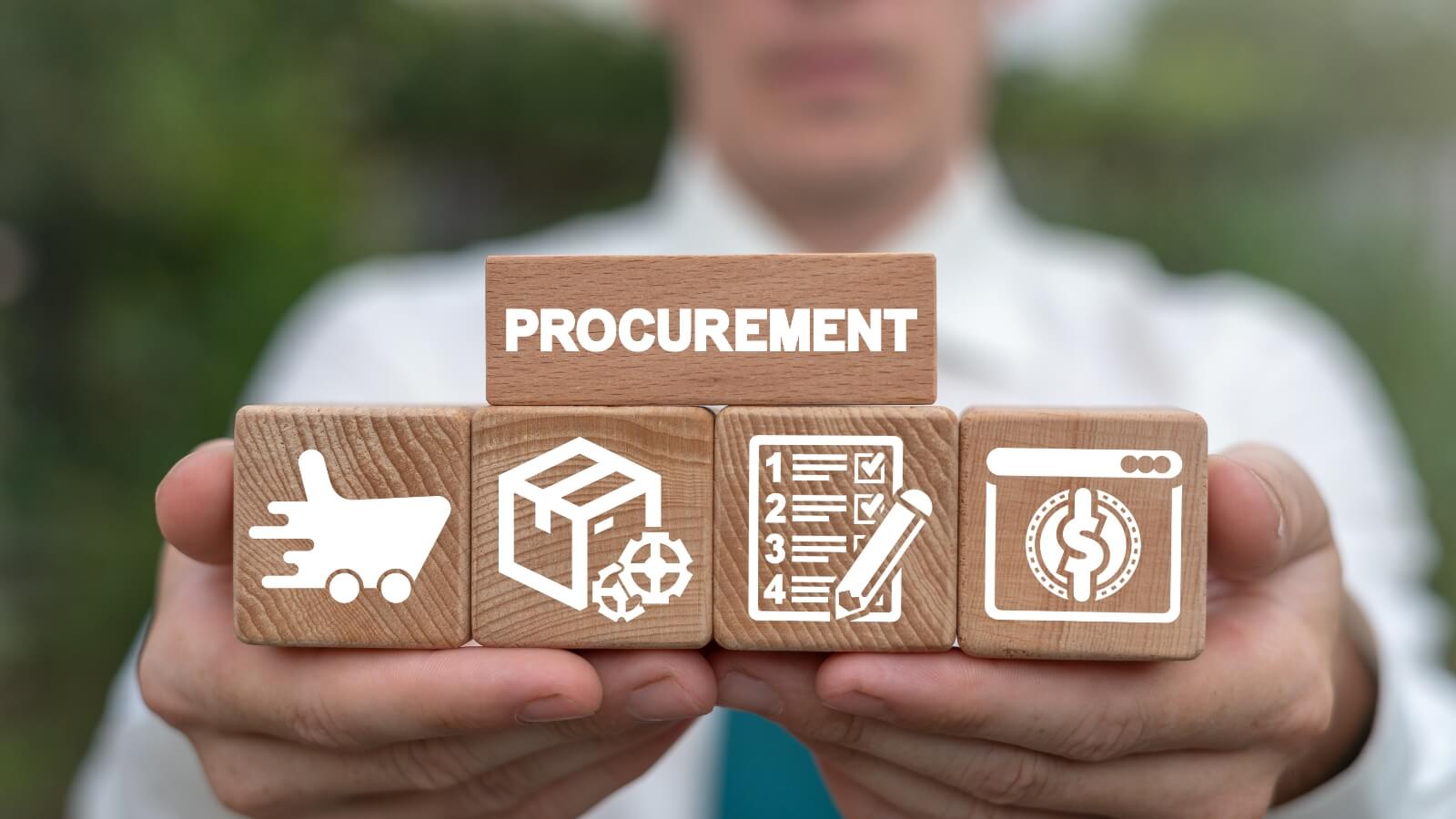UAE’s Journey to Net-Zero Emissions through Sustainability

UAE’s Journey to Net-Zero Emissions through Sustainability
As the UAE continues to experience significant growth and progress, it has also realized the impact of its actions on the environment. With the highest per capita carbon footprint globally, the country has acknowledged the need to prioritize sustainability for the well-being of its citizens and the planet. The UAE has set impressive targets to achieve net-zero emissions by 2050 and reduce greenhouse gas emissions by 23.5% by 2030, demonstrating a deep commitment to the cause.
UAE has already declared 2023 to be the ‘Year of Sustainability’, with a focus on implementing sustainability practices like raising the capacity for renewable energy, enhancing energy efficiency, and lowering waste across multiple industries. It has taken important steps to reduce its carbon footprint and promote sustainability.
One of the most notable initiatives is Masdar City in Abu Dhabi, which has set the goal of being carbon-neutral and zero-waste. This incredible urban development utilizes clean, renewable energy sources like solar and wind power and promotes sustainable transportation options such as electric vehicles and public transit.
It is heavily investing in renewable energy projects, such as the Mohammed bin Rashid Al Maktoum Solar Park, which is one of the largest solar energy projects globally. The country’s target of generating 50% of its electricity from renewable sources by 2050 is ambitious but achievable with the UAE’s continued commitment.
The Dubai Metro, a sustainable transportation option that operates on renewable energy, is yet another example of the UAE’s dedication to sustainability. The government has also implemented several other initiatives to encourage renewable energy, sustainable transportation, and eco-friendly infrastructure, furthering the country’s commitment to a more sustainable future.
The UAE, being a major hub of trade, is taking significant steps towards reducing its carbon footprints in the supply chain industry. To achieve this, they are adopting green logistics practices such as providing efficient routing and scheduling, utilizing green transportation systems, promoting sustainable packaging, and implementing green practices in warehouses. Furthermore, it is also prioritizing supply chain sustainability by managing resources sustainably, reducing the use of hazardous materials, promoting sustainable production methods, and ensuring responsible and ethical sourcing of materials and products. By adopting these measures, the UAE is promoting a more sustainable approach to the production and distribution of goods, while also reducing their environmental impact.
According to the World Economic Forum,” Energy, materials, and mobility, which are the top 3 carbon-emitting industries, can reduce emissions by 4-10% by 2030 with an increased focus on the adoption of digital technologies.” Moglix supports the UAE’s vision to become a carbon-neutral economy by 2050. We have been enabling organizations to digitally transform the procurement supply chain process at a rapid yet sustainable pace.
Contact us to know how we can empower your transformation journey!
The UAE’s Vertical Farming Renaissance: A New Era in Food Production

The UAE’s Vertical Farming Renaissance: A New Era in Food Production
As a country that faces the challenge of arid weather conditions, the United Arab Emirates (UAE) has always been a pioneer in innovation and technology to overcome challenges related to agriculture. Vertical farming is one such innovative solution that stands out.
With the global vertical farming market projected to reach USD 9.7 billion by 2026 and grow at 25%, the UAE is rapidly positioning itself as a global leader in the industry. Many startups and companies in the UAE have already made significant investments in this promising industry, and it’s only a matter of time before we witness a vertical farming revolution in the region.
Sowing the Seeds of Change: Reinventing Agriculture Through Vertical Farming
The world’s population is on an accelerated rise, and with it comes the pressing issue of food security. Climate change, water scarcity, and urbanization are just some factors that will affect the availability and accessibility of food.
Vertical farming is a promising solution that has the potential to revolutionize the agriculture industry. This innovative technique involves growing crops in vertically stacked layers, allowing for high-density cultivation and maximum use of available space. Unlike traditional farming methods, vertical farming requires no soil and uses hydroponic and aeroponic techniques that rely on nutrient-rich water or air for agriculture. It also uses minimal water and no pesticides, making it an eco-friendly and sustainable solution for food production.
Furthermore, agritech startups are leveraging precision agriculture to optimize the benefits of vertical farming. Precision agriculture tailors farming practices to specific crops and regions using data and analytics, providing a smart-agriculture approach that transforms traditional agriculture practices.
As the UAE continues to invest in innovative technologies and sustainable solutions, vertical farming is helping the country meet its food security goals and become a leader in sustainable agriculture practices.
Sky’s the Limit: How UAE’s Vertical Farms Will Feed the Future
The UAE is determined to lead the global food security movement by 2051 with the implementation of its National Food Strategy. This ambitious initiative aims to enhance local food production while promoting sustainable agricultural practices using modern technologies.
Vertical farming is one such technology that is helping the country achieve its food security goals. The UAE is making great strides in vertical farming by scaling up food production through multiple indoor farms. A testament to this progress is the world’s largest R&D indoor vertical farm, which was recently opened in the UAE by US-based AeroFarms in February 2023. This facility, which the Abu Dhabi Investment Office supports, further cements the UAE’s commitment to next-generation agriculture in arid and desert environments.
The UAE’s commitment to food security and its support for innovative technologies has made it an attractive destination for agritech investors. Its robust infrastructure and government initiatives have helped several agritech start-ups, such as Pure Harvest Farms, successfully raise funds, making it the highest-funded agritech start-up in the MENA region.
With government support and innovative application of technology, the UAE is poised to become a leading player in sustainable food production and agritech investment.
Join the Agritech Gold Rush: Opportunities in UAE’s Vertical Farming Industry
With the region’s harsh desert climate, the need for innovative and sustainable food production methods is more pressing than ever. This presents an exciting opportunity for agritech investors to get involved in sustainable food production and contribute to the growth and development of the industry. At Moglix, we recognize the potential for growth and innovation in this field and are committed to supporting sustainable food production in the region. Contact us to learn how we are helping organizations digitally transform their procurement and supply chain by creating seamless B2B procurement ecosystem.
Do you have the right strategy to reduce indirect procurement costs?

Do you have the right strategy to reduce indirect procurement costs?
Have you successfully implemented a procurement cost savings program, only to discover that your procurement expenses still need to be under control? If you answered yes to that, indirect costs related to procurement might be the weak link here.
While direct expenses are easier to track and control, indirect spending is easier to miss. This is changing now, with around 70% of procurement leaders increasingly shifting focus to regulate indirect spending in their supply chain. Your business can also benefit from this approach. However, the first step of this journey is decoding what qualifies as indirect costs in the procure-to-pay cycle.
What are the indirect spends in your supply chain?
Indirect procurement costs are those expenses that are not directly related to your production cycle or the sale of goods and services. These outlays may still be necessary for various ancillary areas of your business to function smoothly. Some common examples of indirect spending in procurement include the following:
● The cost of renting your office premises
● The cost of procuring IT support
● The expenses incurred on office stationery and supplies
● The purchase of office furniture
● The purchase of maintenance, repair, and operation (MRO) consumables
Three fail-safe ways to reduce indirect procurement costs
Here are three tried and tested strategies to keep your organization’s indirect procurement costs from ballooning beyond the budgeted limit.
1. Identify the vulnerable points in your procurement spending.
To effectively save on indirect costs, you must first identify areas where your business inadvertently spends more than necessary. A quick analysis of your historical procurement spending can help zero in on these weak links. Then, once you know what to cut down on, you can devise a plan to reduce these outlays.
2. Compare your supplier options before making a decision.
MRO procurement, office supplies, furniture, and other indirect heads may not vary significantly in quality from one supplier to another. So, compare your options and partner with a cost-effective solution vendor. Also, indirect procurement is not directly tied to production. This gives you more freedom to choose suppliers and vendors who offer the best value for money.
3. Automate your procure-to-pay system
Reports indicate that complete digital adoption and e-procurement can deliver cost savings of 45% or more. By extension, automation in indirect procurement can single-handedly help reduce wasteful expenditure and improve profitability. It also improves visibility of expenses and make the supply chain for indirect procurement more effective and efficient.
Want to get off to a great start? Say hello to your smart procurement partner!
A digital procurement partner like Moglix can help streamline your organization’s procure-to-pay cycle and optimize your procurement spends without compromising profitability. Get in touch with us to step into the future of procurement, with our tech enabled integrated e-procurement solutions.
The ever-evolving landscape of supply chain trends

The ever-evolving landscape of supply chain trends
Businesses have not remained immune to the waves of challenges brought forth by the pandemic. Across sector lines and international boundaries, organizations have had to innovate to survive the new normal and, eventually, thrive.
The New Normal
From supply chain constraints to repeated halts in operations, businesses have had to contend with an array of bottlenecks during this unprecedented time ridden with a global pandemic and the war in Ukraine. One of the major trends to emerge has been organizations’ increasing reliance on technology and digital procurement.
Since every link in the value chain has been adversely affected due to a host of reasons, including supply-side shortages, demand-side stagnation, and a general environment of uncertainty, the path to recovery has been forged with equal parts resilience and restraint.
Upcoming Supply Chain Trends for 2022
Due to the dynamic nature of the supply chain, the trends are ever-evolving and hence unpredictable. However, here are some of the key supply chain trends that surfaced in 2021 and are expected to stay true in 2022:
Widening the value chain basket: One of the main learnings for organizations during the pandemic is the lacunae caused by overreliance on one or two supply chain partners. Businesses are increasingly putting their eggs in different baskets by collaborating with a wider range of suppliers, marketers, and distributors. Though this means increased business coordinations, negotiations etc. across the value chain, organizations that enable seamless digital procurement have come to the industries rescue through their ability consolidate scattered vendor base on a single platform
1. Technology and automation to the rescue: In the wake of the pandemic, businesses are emphasizing leveraging technology to achieve higher accuracy in demand forecasting, production planning, and marketing strategy. Artificial Intelligence and Machine Learning are increasingly being applied to ensure minimal disruptions in the supply chain. Data generated with the help of these emerging technologies are being constantly employed to identify potential areas of growth in business.
2. Building resilience against the global logistics disruption: The widespread disruption of the global logistics chain has caused businesses severe headaches and compelled them to build resilience to production delays, raw material shortfalls, and extremely volatile demand trends. This has driven a drastic restructuring of the supply chain for the better.
3. Supply Chain Trends in the UAE
Being a key member of the GCC, the UAE has robust free trade associations with several countries. In addition to this, the country has bilateral trade agreements with India, The Netherlands, etc. Recently, UAE announced its intention to deepen its ties with growing economies. Some of its business negotiations with countries like India, Turkey, and Indonesia seem to indicate a positive trend in this direction.
Some of the recent supply chain trends in the الإمارات العربية المتحدة are:
- A rise in the prominence of e-commerce and related logistics
- Growth of the pharmaceutical sector
- Easing of duties on import-exports
- Growth of bilateral agreements for trade
The Foreign Trade Ministry of UAE feels that these trade pacts are bound to increase foreign direct investment and enhance business growth in terms of volumes.
Choose Moglix To Stay Ahead of the Curve
The outlook for the UAE logistics market seems to hint at a robust 6.5% CAGR projection for the period of 2022-2027. With supply chain trends picking up pace in what we see as a potential post-pandemic world, it is important for businesses to stay ahead of the curve in order to maximize value.
If you are looking to transform your supply chain and focus on digital procurement, Moglix can help you stay ahead of the curve. We aim to optimize strategic procurement and bring in supply chain efficiency for organizations across various sectors, including manufacturing, infrastructure, and Oil and Gas in the UAE.
Equipped with what is said to be future facing technology and dynamic capabilities such as Integrated Procurement Solutions, Automated Workflows, and Catalog-Based Buying, Moglix ensures that you can take your organization’s operations to the next level by enhancing efficiency and maximizing cost-effectiveness. Visit our website to know more.
Strategies To Address Procurement Woes In a Volatile Supply Chain Market (Turning Chaos Into Control)

Strategies To Address Procurement Woes In a Volatile Supply Chain Market (Turning Chaos Into Control)
Part Two – The Solutions
As discussed earlier in part 1 of this blog, the global COVID-19 pandemic and ongoing war have forced organizations to withstand a highly volatile supply chain environment. The prevailing procurement environment is costlier due to the exponential rise in the cost of shipping and increased operational costs. In addition to these reasons, continuing exclusive use of the existing legacy technologies and switching to spot bidding for logistics by the organizations are adding burden to the businesses. As a wise option for surviving the highly volatile supply chain environment, businesses should turn their focus to digital procurement and technology.
From Chaos to a Semblance of Control
Faced with an array of challenges, including higher costs of freight, reduced revenue, extreme pressure on bottom lines, and persistence with obsolete legacy systems, businesses are increasingly turning to technology and digital procurement to ensure their supply chain and sourcing strategies can keep up with the high volatility of the market.
Here are some of the solutions businesses are adopting to attain excellence in their logistics management.
1. Evolution, Adaptation, and Responsiveness: A high degree of volatility in the supply chain and the business environment calls for a correspondingly high degree of adaptation on the part of businesses. This is why most businesses are switching to Dynamic Market Sourcing.
As opposed to Traditional Cycle Sourcing, its dynamic counterpart enables organizations to constantly assess the market, have better communication with their supply chain partners, and manage the ever-changing landscape of freight costs, and the influx of new suppliers.
2. Leveraging technology to stay ahead of the curve: In this day and age, businesses are largely driven by data. With high fluctuations on the demand and supply side alike, businesses must leverage technology and data-based insights to be as dynamic and adaptive as possible.
From better demand forecasting to an increased emphasis on automation, there are myriad ways through which the challenges of a highly volatile supply chain can be met head-on and with success.
3. Risk management: Risk is an integral facet of any business, and the higher the accuracy of risk assessment is, the higher an organization’s chances to mitigate risks in an efficient manner. One of the key strategies in managing supply chain-related risks is having multiple suppliers instead of one or two.
Another solution is to always be prepared by analyzing market trends and conducting what-if analyses. This way, your organization can be well placed to deal with a high-risk situation. Risk assessment is, in many ways, akin to an airbag in a vehicle. It protects your business from potential crashes.
The Future of Supply Chain
You can now bring digital procurement to the forefront of your business and excel in a highly volatile supply chain environment by relying on Moglix’s Integrated Procurement Solutions, Automated Workflows, and Catalog-Based Buying Solutions, amongst others, to revolutionize your business’s approach to logistics. To know more, visit our website.
Strategies To Address Procurement Woes In a Volatile Supply Chain Market (Turning Chaos Into Control)

Strategies To Address Procurement Woes In a Volatile Supply Chain Market (Turning Chaos Into Control)
Part One: The Challenges
Change is the only constant and the global COVID-19 pandemic had brought this universal truth home in an unprecedented manner. Businesses across the globe had found themselves faced with severe supply chain and sourcing challenges, leading to higher volatility and higher risk. In the face of such bottlenecks, traditional approaches to supply chain and logistics management were no longer effective or feasible.
Viability amidst volatility
It is no secret that one of the things that make businesses thrive is stability in processes. The pandemic and the ongoing war, however, disturbed the very foundations of stability and compelled organizations to withstand a highly volatile supply chain environment. Here are some of the challenges faced in the prevailing procurement environment:
1. Building capacity is now costlier: One of the main characteristics of the present sourcing market is the exponential rise in the cost of shipping. The rise in container freight and air freight has made it drastically difficult for businesses to build and sustain capacity and stability. For instance, before the pandemic struck the world, the freight for the China to USA route was around $1,500 (for a 40-foot container). This price is now anywhere between $10,000 to $15,000, making it financially nonviable.
2. Preserving the bottom line is now harder: With the rising cost of materials as well as shipping costs, organizations are increasingly grappling with higher operational costs. The problem is exacerbated by the constant decline in demand and, in turn, revenues. The combined effect is a significant drop in the bottom line of organizations.
3. Continuing with Legacy technologies: At a time when digital procurement is being looked at as a key driver to solve businesses’ supply chain woes, several organizations are still continuing with old and obsolete legacy systems. Not only are those systems time-consuming and cost-heavy, but they are also non-responsive to factors such as price compression, capacity changes, etc.
4. Switching to spot bidding for logistics: Traditionally reliant on annual freight contracts with low prices, businesses now have to manage the necessary switch to spot pricing in logistics. The restrictions in the capacity and movement of air cargo in the wake of the pandemic have brought spot price bidding to the fore, placing a higher than ever before pressure on their operational costs.
The Bottom Line
In order to survive and thrive amidst a highly volatile supply chain environment, businesses must turn to digital procurement and technology. This is where Moglix can help you transform your business through our Catalog Based Buying, Automated Workflow, Enhanced Visibility, and Integrated Procurement Solutions. Know more on our website.

 نحن على أتم الاستعداد لنقودك نحو مستقبل التجارة بين الشركات وسلسلة التوريد.
نحن على أتم الاستعداد لنقودك نحو مستقبل التجارة بين الشركات وسلسلة التوريد.